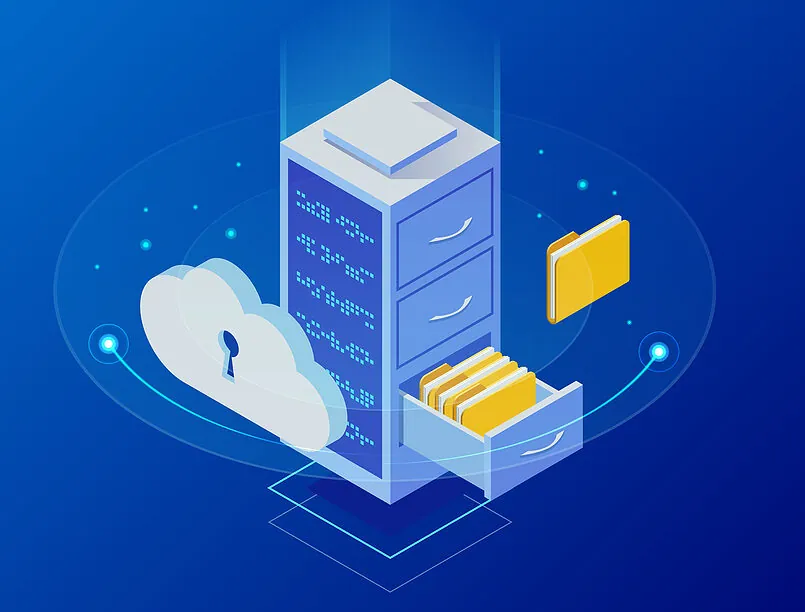
FSMA 204 Extension: Digital Traceability that Delivers ROI Before 2028
Summary: The proposed FSMA 204 extension gives operations, quality, and IT leaders time to modernize traceability at the product and lot level. Use the window to build standards-based data flows that cut risk and pay for themselves in daily operations, not just at audit time.
FSMA 204 Extended But Same Rule Applies
FSMA 204 set a high bar for end-to-end traceability on higher risk foods, which requires clean product and lot data across suppliers, plants, and DCs. As companies worked through plans, many found that label changes, system integrations, and standards alignment would take more coordination than a single budget cycle. In response to that landscape, FDA issued a proposed compliance date extension, documented in the Federal Register notice, to create more runway for orderly implementation.
The extension moves the proposed compliance date to July 20, 2028. The rule itself did not change. Covered entities still need to capture Key Data Elements at Critical Tracking Events and maintain a written plan as outlined in the FDA’s Food Traceability Rule requirements and clarified in the FSMA Food Traceability Rule FAQ.
What this means for leaders: You have time to pilot digital capture, clean master data, and onboard suppliers without shortcuts, while continuing to meet customer and audit expectations for interoperable data. Use the window to standardize on GS1 identifiers and EPCIS so your program scales, then measure early wins that fund the broader rollout.
Understanding FSMA 204 Essentials
At its core, FSMA 204 aims to speed outbreak investigations, reduce the size of recalls, and strengthen consumer trust. The rule pursues those outcomes by making product and lot data reliable, complete, and easy to share across suppliers, plants, distribution centers, and customers.
Who is covered? FSMA 204 applies to entities that manufacture, process, pack, or hold foods on the Food Traceability List, which concentrates on higher risk items where rapid traceback matters. What’s required? Companies must capture specific Key Data Elements at each Critical Tracking Event, keep a written traceability plan, and be able to provide records to FDA quickly, as described in the FDA’s Food Traceability Rule requirements.
If your team needs help with definitions or edge cases, align terminology using the FDA’s FSMA Food Traceability Rule FAQ. For non technical audiences, start with a plain language primer that connects shop floor tasks to compliance outcomes. With a common understanding in place, the next step is designing data capture and labels that make these requirements routine in daily operations.
Converting Compliance Cost To ROI
Compliance sets the baseline from which product and lot level digital traceability can generate returns that leaders feel in risk, labor, and working capital. The most immediate proof usually comes from recall performance. When you can trace precise lot genealogy from receiving through transformation to ship, you target only the affected units, keep good inventory in market, and protect revenue. The same data powers FIFO or FEFO that actually sticks, since dates and lots travel with the product, which cuts shrink and lifts freshness.
What do we gain by modernizing workflows on the floor? Digitizing logs and handoffs removes rekeying, reduces errors, and gives supervisors an audit trail they can trust. Supplier performance improves when label and data expectations are visible and enforced, especially when everyone aligns to GS1 standards. Consistent labels and event data shorten dock-to-stock time and cut firefighting at receiving.
Better data also improves planning. With trustworthy product-level visibility, schedulers and buyers can balance production, aging, and service levels with fewer safety buffers. Pair that capability with real-time inventory visibility for food and beverage to make gains show up in fill rate and working capital. Translate the improvements into a scorecard that finance will recognize, time to trace, units avoided in drills, waste reduction, and labor hours saved.
Product-Level Data Architecture That Works
You have identified areas where ROI can be obtained, now you need a data backbone that makes those wins repeatable. The goal for most organizations is to give your teams a reliable way to capture and share product and lot data as work happens, without extra steps or shadow spreadsheets. A standards-first approach keeps the design practical for plants, DCs, and suppliers, and it avoids custom formats that are hard to scale. This blueprint keeps options open because it leans on open standards instead of one-off formats.
- Standards: Use GS1 identifiers and events, including GTIN, Lot or Batch, production and expiration dates, and GLNs for locations. Ground your model in GS1 standards for FSMA so you can exchange data without custom formats.
- Data capture: Deploy rugged mobile scanning at each CTE, receive, transform, pack, and ship. Tying scanning to mobile barcoding software captures KDEs accurately at the point of work.
- Systems: Integrate with core platforms using the ERP and WMS patterns outlined in smarter warehouse operations. Store EPCIS and trace data in a searchable repository, then surface it for mock recalls and investigations.
- Labeling: Upgrade to support GS1 DataMatrix or GS1 128, and enforce supplier label specs with an onboarding playbook informed by GS1 guidance.
- Analytics: Build dashboards for KDE completeness, label conformance, and mock recall time so exceptions drive action.
Quick Wins During The Extension Window
Use the extension to turn extra time into early proof. Quick wins can cut risk now, free up labor, and create evidence your finance team will recognize. Start with small, visible changes that unlock product and lot data where work happens, then reuse what works to build momentum site by site. These quick wins create evidence that the program saves real money while it reduces risk.
- Select three to five high velocity or high risk SKUs, then run a 90 day pilot mapping CTEs to KDEs across one site and one DC.
- Clean and standardize master data, GTINs, GLNs, item and location records, so labels and scans validate cleanly.
- Launch supplier enablement, publish label specs and examples, and pilot EDI or EPCIS exchange with a willing partner.
- Digitize paper forms for kill steps, transformations, and rework, then connect them to lot genealogy using mobile barcoding.
- Train cross functional teams, then run a monthly mock recall script and track time to trace.
Readiness Roadmap And Timeline
Build a roadmap that turns intent into steady progress. Break the journey into phased milestones that deliver value at each step while reducing risk. Assign clear owners, timelines, and checkpoints so each site learns from the last and enterprise readiness becomes achievable. Document each step as a reusable pattern so every site onboards faster than the last.
- 0 to 90 days: Discovery and gap analysis, agree on standards, define pilot scope and success criteria.
- 90 to 180 days: Execute the pilot, deploy scanning, integrate with ERP or WMS, and generate your first EPCIS events with the patterns from Smarter Warehouse Operations.
- 6 to 12 months: Expand to more lines or plants, raise supplier data conformance above 80 percent, and harden mock recall playbooks.
- 12 to 24 months: Roll out across sites, automate reporting, and stand up KPI governance with business owners.
- Pre-deadline: Complete an enterprise readiness review, finalize customer data-sharing playbooks, and confirm alignment with the FDA’s Food Traceability Rule.
Measure What Matters
Metrics should tell a story your operators, FSQA, and finance all rally behind. Keep the focus on a short, repeatable set that proves risk goes down and efficiency goes up. Use the Q and A below to frame the conversation in reviews and pilot readouts.
Q: What should we measure first?
A: Start with traceback time, and aim for minutes instead of hours or days. Validate it through regular drills that mirror real investigations so the number reflects how work actually happens.
Q: How do we know the data is reliable?
A: Track KDE completeness and accuracy at each CTE and by line. Use the results to target coaching and to confirm that labels, scans, and system checks are working together.
Q: How do we show recall precision without spreadsheets?
A: Quantify the scope you avoid pulling in drills when lot genealogy is solid. Fewer units removed for the same scenario is evidence that precision is paying off.
Q: What proves impact on the floor?
A: Look for waste and shrink trending down as FEFO sticks, and for labor hours returning to value add work as paper logs and rekeying disappear.
Q: How do planners and finance see the benefit?
A: As product level visibility improves, inventory turns and service levels should rise. Tie those gains to the same traceability data so the whole story connects.Use operations data to round out the picture. Waste and shrink should trend down as FEFO sticks and dates flow cleanly with each lot. Digitized logs and the removal of rekeying should show up as labor hours returned to value-add work. As planners trust product level visibility, inventory turns and service levels should rise. Roll these measures into a scorecard and review them alongside real-time inventory visibility for food and beverage, so improvements land across operations, not only in food safety.
Make Extra Time Pay Off Before 2028
Teams that connect mobile data capture with ERP and WMS see faster, cleaner traceability without heavy IT lift. For a concrete example, review RFgen’s Caito Foods case study to see end-to-end ingredient and finished goods lot tracking in a complex operation.
Ready to turn the extension into results that pay for themselves? Schedule a tailored demo of mobile barcoding software connected to your ERP.
Helpful Links:







